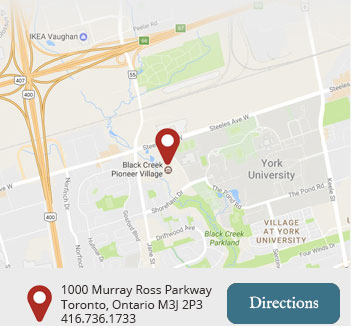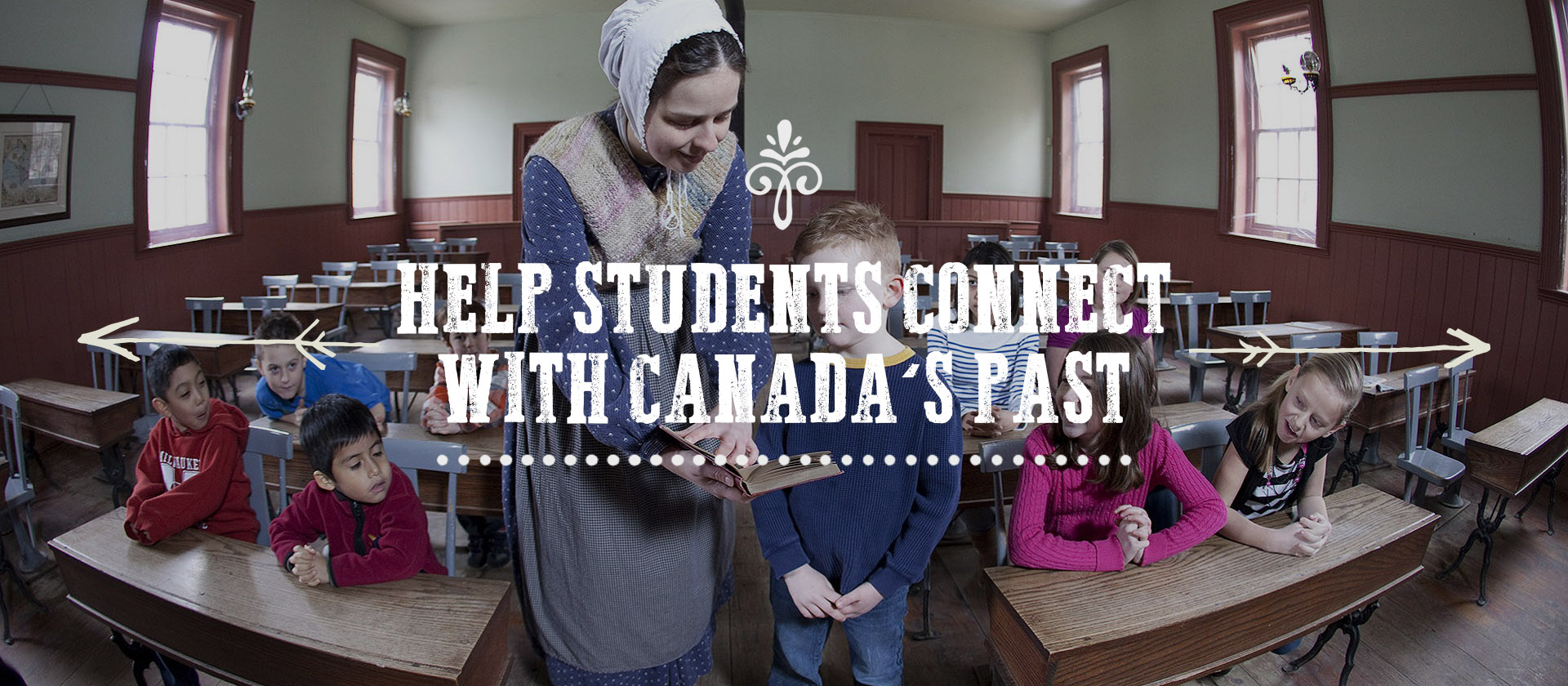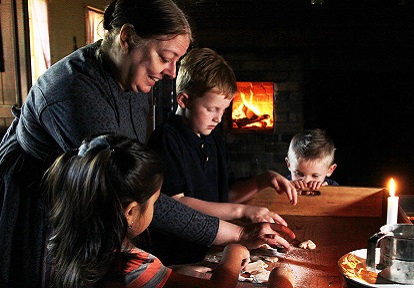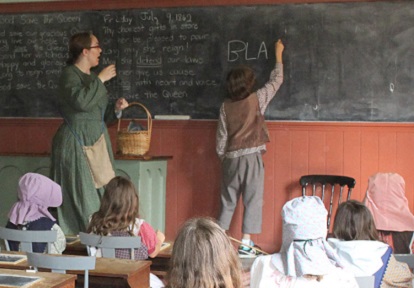Black Creek Pioneer Village provides a great immersive educational experience for youngsters. We’ve put together a selection of tools and suggested activities that you can use, both before and after your class visit, to help students get the most of their time at the Village.
GENERAL ACTIVITIES
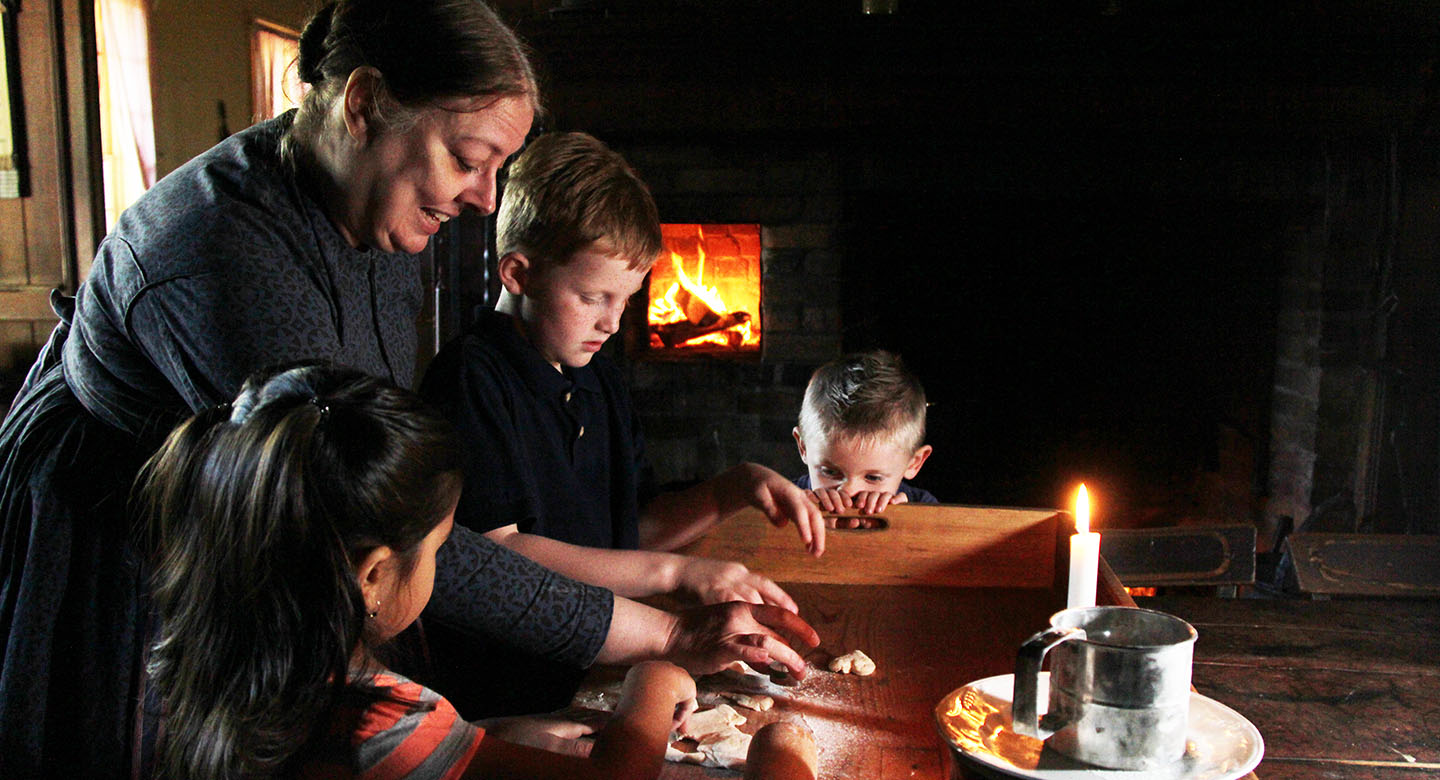
Pre-Visit
• Create/discuss a list of words pertinent to life in the nineteenth century. CHECK OUT OUR VOCABULARY PAGE
• Have students record all of the times they use electricity, running water and/or cars in one day. Discuss the lists in class.
Suggested questions:
› Do students think they could live without using electricity/running water/cars?
› Do they use these a lot throughout their day?
› What alternatives could they use if they did not have these things in their homes/lives?
Post-Visit
• Hold a class spelling bee. CHECK OUT OUR VOCABULARY PAGE
• Write diary entries for a week in the life of a 19th-century apprentice or student, including his/her thoughts.
• Create a step-by-step procedural written piece on an everyday process (such as wool production or the milling of flour) in the 1800s.
• Compare today’s transportation to the transportation of early settlers. Students can map their route to school, discuss how long it takes and what modes of transportation they use. Incorporate mathematics: Have students calculate how long it would take them to get to school in the 1860’s. Calculate how far they can walk per minute. Chart their results.
• Most early settlers came from different countries around the world. Have students research their own genealogy (back to their grandparents’ generation — or beyond!). Have a class discussion about the factors that lead families to emigrate to a new land. Students may interview family members and share family experiences.
CROSS-CURRICULAR ACTIVITIES
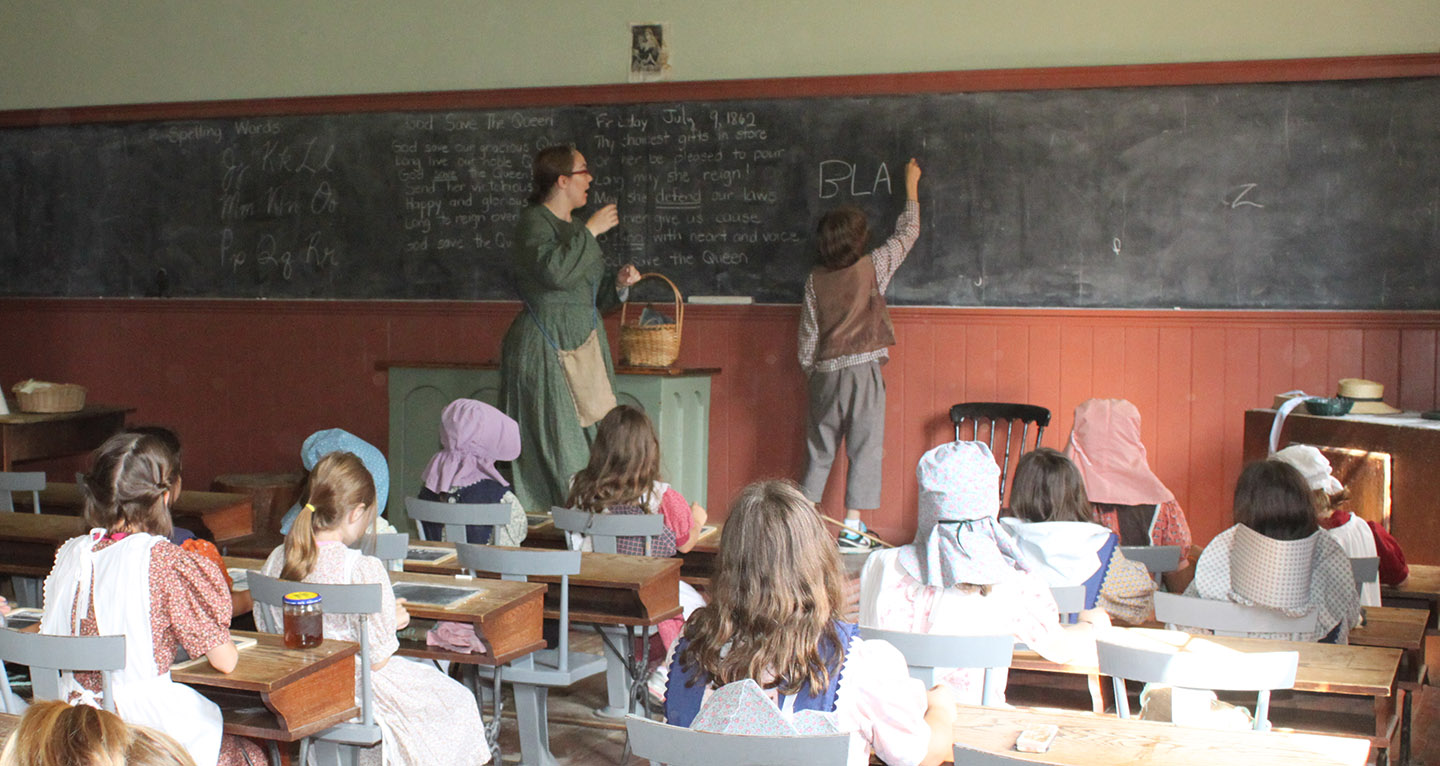
Mathematics
• Visit a local cemetery and record birth/death dates. Graph dates and draw conclusions on longevity.
Potential Curriculum Covered: Data Management & Probability
• Compare today’s transportation to the transportation of early settlers. Students can map their route to school, determine how long it takes and discuss what modes of transportation they use. Have students calculate how long it would take them to get to school in the 1860’s. Calculate how far they can walk per minute. Chart their Results.
Potential Curriculum Covered: Measurement, Number Sense and Numeration, and/or Data Management & Probability
• Calculate and plan the construction of a barn or log cabin. Students can create a floor plan/layout with measurements. Students can also construct at least the skeleton of their barn or log cabin with materials such as popsicle sticks and/or straws.
Potential Curriculum Covered: Measurement, Geometry & Spatial Sense
• Students can pretend they are storekeepers of the general store. Students will have to think about what goods they need to have in their store, what price they get the goods for, what price they will sell them for and how many people will have to buy the goods. Teachers can add in bartering systems and do a mock-real life version in the classroom.
Potential Curriculum Covered: Number Sense & Numeration
• Students can calculate a daily schedule for children in the 1860’s. Many children had chores to do as well as schoolwork — and school was often an hour’s walk from their home. Classes started at 9:00 am and lasted until 5:00 pm. How could children fit all their chores into the day and go to school? Plan a schedule for a student living in the 1800s by listing the various tasks they might do throughout the day.
Potential Curriculum Covered: Measurement (Time)
Science & Technology
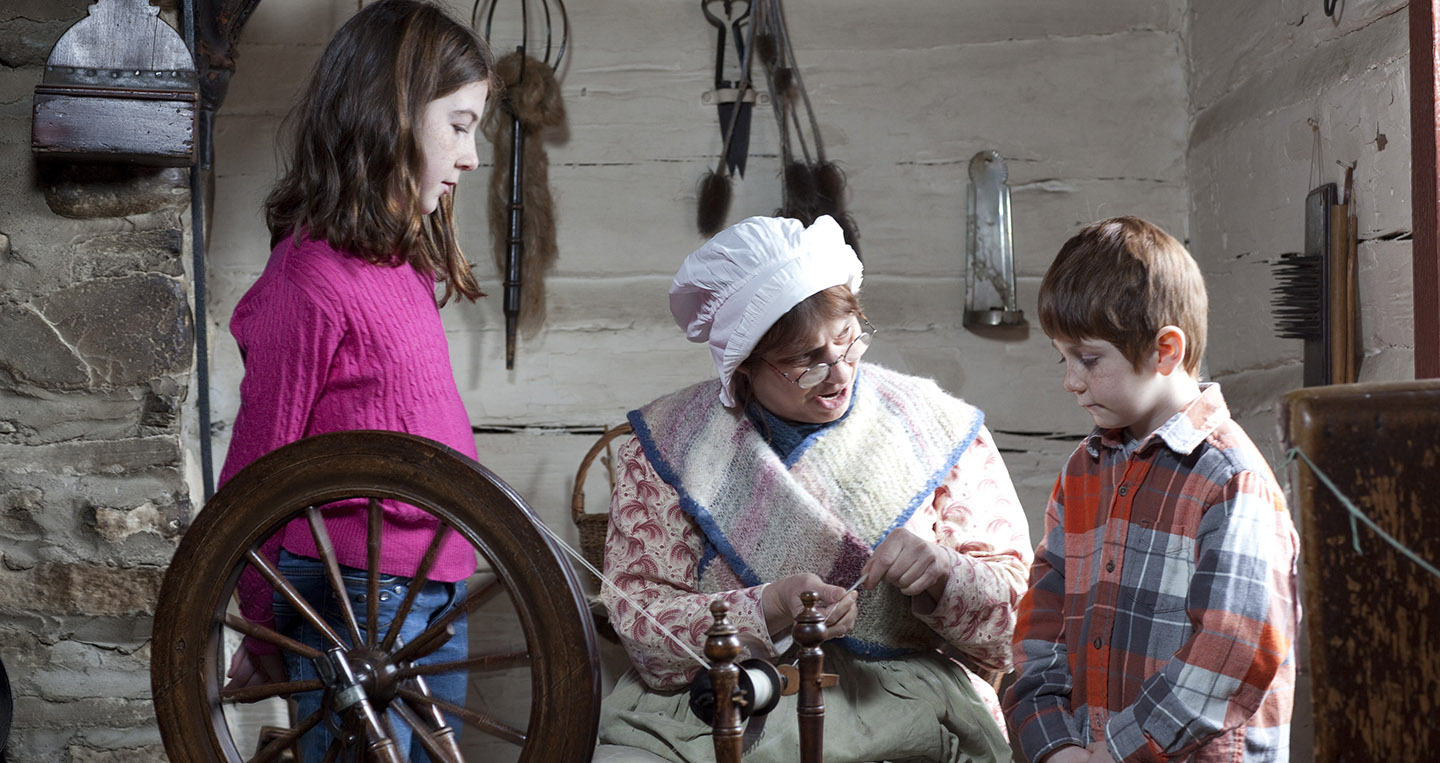
• Record the weather for a month. Students can pretend they are recent immigrants to Upper Canada and use the weather data to determine how weather would effect settlement in terms of building a house, farming and travel, etc. Science experiments can be conducted with growing plants to determine ideal growing conditions.
Potential Curriculum Covered: Grade 3 Growth & Changes in Plants, Soils in the Environment
• Look at the structures settlers built in Upper Canada. How were they constructed? Were they strong? Students can construct a log cabin, barn or other pioneer structure, or at least the frame of any with materials such as popsicle sticks and/or straws.
Potential Curriculum Covered: Grade 3 Strong & Stable Structures
• Students can do experiments with different plant materials to determine whether they would make a good dye for wool. Which plants could be used to dye wool yellow (Dandelion), pink (Rhubarb), orange (onion skin), brown (Oak bark or walnuts), or red (madder root)?
Potential Curriculum Covered: Grade 3 Growth & Changes in Plants, Soils in the Environment
Health & Physical Education
• Plan a gym class based on games and sports played in the 1800s. Games & Sports include baseball, hoop rolling, skipping rope, jacks, badminton, stilt walking, three-legged races, marbles and even cricket!
Potential Curriculum Covered: Active Living, Movement Competence: Skills, Concepts, and Strategies.
The Arts
Dance:
• Research and practice the dances that would have been part of a social such as quadrille, polka, waltz, Sir Roger de Coverley or a cottilian.
Art:
• Have students design a patch on paper or fabric about something they learned at Black Creek Pioneer Village and tape/sew them all together to make a patchwork quilt.
• Create Cornhusk Dolls
• Create Fortune Tellers
• Create a Conestoga Wagon using Shoe boxes, toilet rolls, paper and modeling clay/drawings for horses. Pair it with a Mathematics lesson to see which one can hold the most weight!

